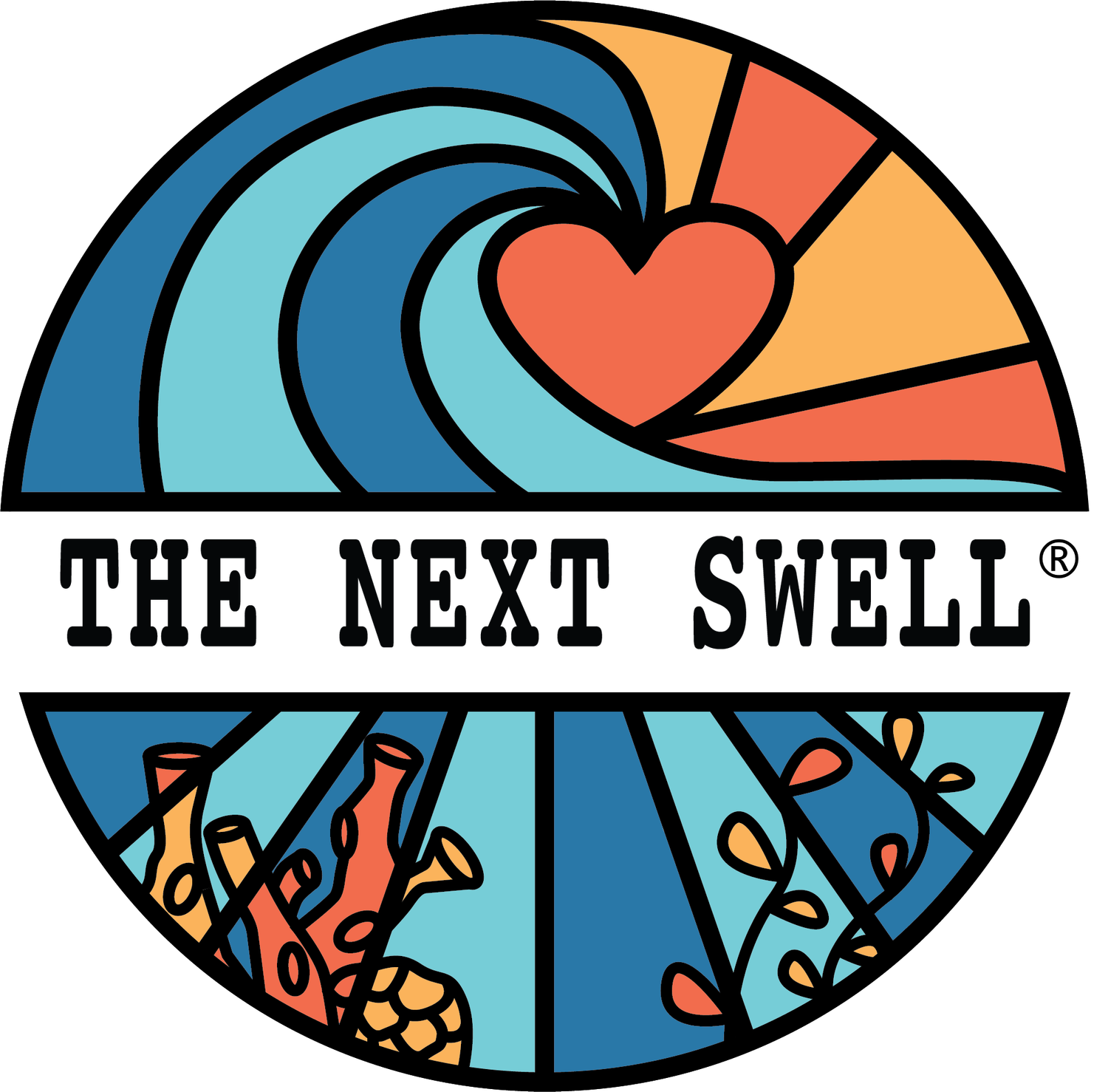Meet the Swell Squad via our Waters!
Jackie enjoying a sunny day, kayaking on the Chesapeake Bay in Virginia.
The Swell Squad comes from all over the place, and so we live, work, and play amongst different marine or freshwater habitats. Many of these areas are “Urban Ecosystems”, heavily influenced by large urban centers and industries. From the corals and beaches of Hawaii, to the largest estuary in the United States, the Swell Squad is passionate about our respective homes, and hope that you take a look at where you live and see the beauty and importance of the natural environment around you!
Jackie - Chesapeake Bay
Fresh water from over 100,000 rivers and streams from six mid-Atlantic states meet salt water from the Atlantic Ocean, bridging the gap between land and sea. This type of ecosystem, where fresh and saltwater mix, is called an estuary. Estuaries are extremely productive environments, creating organic matter and providing habitat for all kinds of animals—especially invertebrates. The waters provide important nursery habitat for fish and shellfish, and the thick vegetation provides shelter and food for migrating birds and protects the land from storms. The nutrient-rich water from the Chesapeake Bay flows into the Atlantic Ocean, creating rich fishing grounds. This is why whales can be found within a few miles of the beach off Virginia Beach in winter months.
Cara - Long Island Sound
Long Island Sound is an estuary much like the Chesapeake Bay, but it is a vastly different environment for a few reasons. First, it is fed by fewer rivers, has two connections to the Atlantic Ocean, and tends to be saltier overall than the Chesapeake Bay. The colder waters support different forms of life, including lobster, and the rocky intertidal zones are home to a diversity of marine plants and algae. Grass-dominated salt marshes form a large portion of the shoreline, which provides shelter for young fish, birds, mammals, and other organisms. There are approximately 120 species of finfish living in the Sound throughout the year, and 50 species use Long Island Sound as a spawning ground, making it incredibly important for the support of fisheries.
Morgan - South Florida, Atlantic Ocean
South Florida is home to the Florida Reef Tract, which is one of the world’s largest coral reef formation and is the only barrier reef tract in the continental United States (which is also a part of the Florida Keys National Marine Sanctuary). Mangrove forests, seagrass, hardbottom habitats, and patch coral reefs are examples of the habitats that support biological diversity of epic proportions. Mangroves reduce coastal erosion, improve water quality, sequester carbon, and act as bird rookeries, among other things. Seagrass beds are a primary food source for the endangered manatee, provide important habitat for juvenile fish, and stabilize the sediment. Mangroves, seagrasses, and coral reefs are all connected through the movements of freshwater, migrations of animals, and ocean current. Additionally, these habitats are all supported by the Everglades, a unique habitat located upstream of the coastal environment.
Sridevi - Gulf of Mexico
The Gulf of Mexico not only heavily influences the marine ecosystem of South Florida through its oyster beds, mangroves, salt marshes, it is home to some unique habitats of its own. The deep-sea habitats of the Gulf of Mexico are home to deep-sea coral, and other unique species. The Gulf is critical habitat for the endangered elkhorn and staghorn corals, and Flower Garden Banks National Marine Sanctuary is located here. Whale sharks and a unique subspecies of endangered Bryde’s whale roam here, as well as the western stock of bluefin tuna that spawns exclusively in the Gulf. Kemp’s ridley sea turtles nest on the beaches of south Texas and along the Mexican coast.
Britt (and Kai!), Kevin & Beckie - Hawaii
Hawaii is a seamount island chain in the Pacific Ocean that was formed by a volcanic hotspot (aka- where a volcano forms in the middle of a tectonic plate). Coral reefs grow in the well-lit waters off the coast. Due to the unique isolation of the Hawaiian Islands (they are about 2,000 miles from California, 3,400 miles from Japan, and 850 miles from French Polynesia), greater than 60 percent of coral reefs in U.S. waters are found in the Hawaiian Archipelago, and a quarter of the life within these reefs are found nowhere else (the term for this is “endemic”). Additionally, coral reefs provide benefits that are like those of marshes—they provide habitat, protect coasts from storms, and support tourism and fishing industries. Corals are being threatened by climate change, ocean acidification, runoff of land pollutants, overfishing, and destructive fishing and tourism practices. The tourism industry produces about 8% of the Hawai’i total gross domestic product, so keeping reefs healthy is extremely important. Additionally, the Hawaiian Islands Humpback Whale National Marine Sanctuary provides protection to thousands of breeding humpback whales each year.
Michelle – Our Nomad
Once COVID-19 hit, Michelle realized nothing was holding her to the big city of Los Angeles. So, she left her apartment, bought a van, and hit the road. In the past six or so months, Michelle has explored a good portion of both, the east and west coast…so it would not really be fair to pin her to just one body of water. But be sure to check back and hear about the traveling escapades of Michelle in a future blog post.
While we may all be spread out across the United States, the natural world is interconnected, and these various habitats face many of the same threats. Learning more is the first step in protecting the places we love. We encourage you to get out and explore the natural world where you live, no matter where you are. Even if you are far away from the ocean, protecting where you live ultimately benefits the greater marine environment, and every little bit helps!

